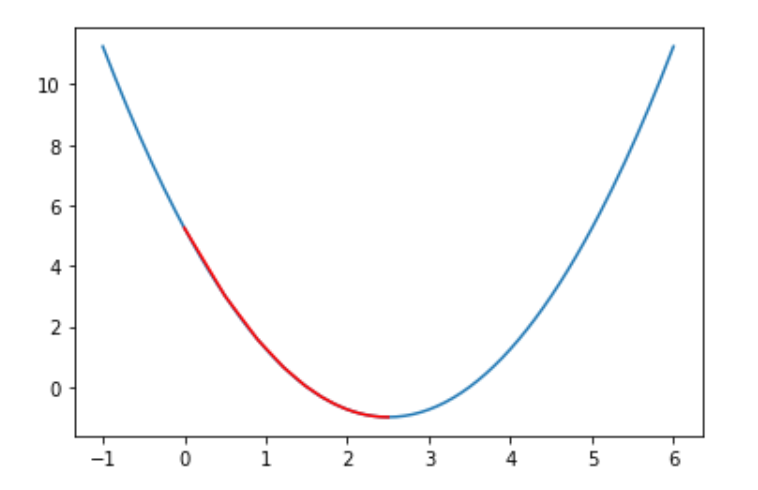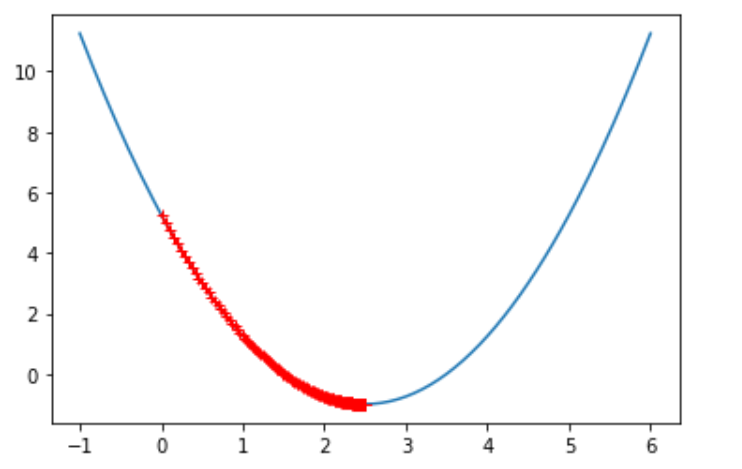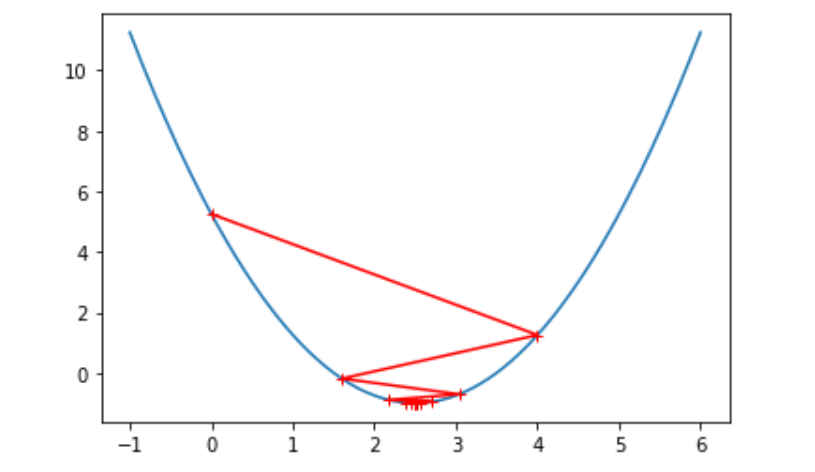import numpy as np import matplotlib.pyplot as plt
构造一元二次方程
x = np.linspace(-1, 6, 141)
y = (x-2.5)**2-1
绘图
plt.plot(x,y)

目标函数
def J(theta): try: return (theta-2.5)**2-1 except: return float("inf")
目标函数的导数
def dJ(theta): return 2*(theta-2.5)
对于一个一元二次方程来讲,要寻找该方程的最小值,可以寻找方程导数为零的点。
如何寻找导数为零的点呢?以上面的方程:(theta-2.5)**2-1 为例
我们随便找一个点,
- 如果该点的导数为零,则一步找到
- 如果导数小于零,说明此时位于方程的左半边,需要向着x大于0的方向搜索
- 如果导数大于零,说明此时位于方程的右半边,需要向着x小于0的方向搜索
即:要使用梯度下降法找到一个函数的局部极小值,必须向着函数上当前点对应导数(或者是近似梯度)的反方点进行迭代搜索
方法一:
theta = 0.0 eta = 0.1 epsilon = 1e-8 while True: gradient = dJ(theta) last_theta = theta theta = theta-eta*gradient if (abs(J(theta)-J(last_theta)) < epsilon): break print(theta) print(J(theta))
2.499891109642585 -0.99999998814289
方法二:
theta = 0.0 eta = 0.1 epsilon = 1e-8 while True: gradient = dJ(theta) last_theta = theta theta = theta-eta*gradient if (abs(theta-last_theta) < epsilon): break print(theta) print(J(theta))
2.4999999646630586 -0.9999999999999988
以上可以看出两种计算方式效果是差不多的
theta = 0.0 theta_history = [theta] while True: gradient = dJ(theta) last_theta = theta theta = theta-eta*gradient theta_history.append(theta) if (abs(J(theta)-J(last_theta)) < epsilon): break plt.plot(plot_x, J(plot_x)) plt.plot(np.array(theta_history), J(np.array(theta_history)), color="r")

len(theta_history)
46
def gradient_descent(initial_theta, eta, epsilon=1e-8): theta = initial_theta theta_history.append(inital_theta) while True: gradient = dJ(theta) last_theta = theta theta = theta-eta * gradient theta_history.append(theta) if (abs(J(theta)-J(last_theta)) < epsilon): break def plot_theta_history(): plt.plot(plot_x, J(plot_x)) plt.plot(np.array(theta_history), J(np.array(theta_history)), color="r", marker="+")
eta = 0.01 theta_history = [] gradient_descent(0.0, eta) plot_theta_history()

len(theta_history)
424
eta = 0.8 theta_history = [] gradient_descent(0.0, eta) plot_theta_history()
